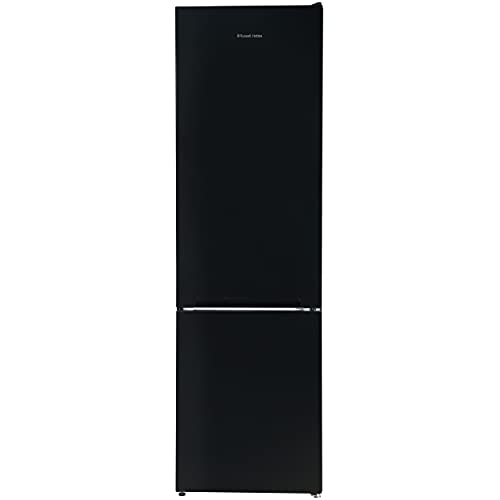
Fridge Uk
Add a review FollowOverview
-
Founded Date June 8, 1962
-
Sectors Psychiatry doctors
-
Posted Jobs 0
-
Viewed 5
Company Description
7 Things You’ve Always Don’t Know About Fridges And Freezers
Understanding Fridges and Freezers: The Essential Kitchen Appliances
Fridges and freezers are 2 of the most necessary appliances in modern kitchens. These appliances serve a vital function in food conservation and waste decrease by ensuring that perishable items stay fresh and safe for usage. This post delves into the various kinds of fridges and freezers, their functionalities, and important factors to consider for selection and upkeep.

Types of Refrigerators
The marketplace offers a variety of refrigerator types, each developed to fulfill various consumer needs. Below is a list of the most typical types of fridges:
-
Top-Freezer Refrigerators
- Most typical type.
- Freezer compartment is located above the refrigerator section.
- Typically more budget friendly and energy-efficient.
-
Bottom-Freezer Refrigerators
- Freezer is situated at the bottom.
- Permits simpler access to fresh products at eye level.
- Often includes pull-out drawers for better company.
-
Side-by-Side Refrigerators
- Refrigerator and freezer sections are surrounding.
- Perfect for narrow kitchen areas and allows simple access to both compartments.
- Typically comes with water and ice dispensers.
-
French Door Refrigerators
- Combines a bottom freezer with double doors at the top.
- Offers adequate storage and stylish styles.
- Often consists of features like temperature-controlled drawers.
-
Compact Refrigerators
- Smaller size ideal for restricted areas.
- Commonly utilized in dormitory, little apartments, or as secondary fridges.
Table 1: Comparison of Refrigerator Types
| Type | Advantages | Disadvantages | Common Size |
|---|---|---|---|
| Top-Freezer | Budget friendly, energy-efficient | Less practical access to the freezer | 14-30 cu. ft. |
| Bottom-Freezer | Easier access to fresh food | Freezer can be more difficult to organize | 19-30 cu. ft. |
| Side-by-Side | Easy access, water/ice dispenser | Narrow vs. storage area | 22-30 cu. ft. |
| French Door | Trendy, large, organized | More costly | 20-30+ cu. ft. |
| Compact | Space-saving, portable | Minimal storage | 1.7-5.5 cu. ft. |
Types of Freezers
Freezers are an equally crucial appliance for food conservation. They are available in numerous styles designed to fit different family needs. Consider the following types:
-
Upright Freezers
- Run like a standard refrigerator with vertical storage.
- Easier to organize with racks and compartments.
-
Chest Freezers
- Large, horizontal style typically using more storage space.
- Maintains temperatures better during power outages.
- More energy-efficient than upright models.
-
Portable Freezers
- Compact units perfect for outside activities or little areas.
- Often utilized for camping journeys or as short-lived storage.
Table 2: Comparison of Freezer Types
| Type | Benefits | Downsides | Common Size |
|---|---|---|---|
| Upright Freezer | Much easier to arrange | Less energy-efficient, more floor area | 5-20 cu. ft. |
| Chest Freezer | Holds more items, energy-efficient | Harder to arrange | 5-25 cu. ft. |
| Portable Freezer | Compact and flexible | Limited storage capacity | 1-10 cu. ft. |
Key Features to Consider
When selecting a fridge or freezer, customers ought to remember several features that can improve functionality:
- Energy Efficiency: Look for models with the ENERGY STAR accreditation to save money on electricity costs.
- Storage Capacity: Evaluate storage needs based on household size and consuming routines.
- Temperature Control: Some appliances use digital controls for exact temperature level settings.
- Adjustable Shelving: Customizable shelving allows for ideal company.
- Water and Ice Dispenser: Offers benefit however can take up important area inside.
- Sound Level: Sound ratings can affect convenience, particularly in open-concept homes.
Benefits and drawbacks of Having a Fridge and Freezer
While Fridges & freezers and freezers are important innovations, they also have specific advantages and drawbacks:
| Pros | Cons |
|---|---|
| Maintain food life-span and decrease waste | Require regular maintenance |
| Enable bulk purchasing and meal prepping | Can be pricey to buy and run |
| Offer benefit and fast access to food | Inhabit substantial cooking area space |
Upkeep Tips
To guarantee durability and ideal performance of fridges and freezers, consider the following maintenance suggestions:
- Regular Cleaning: Clean the interior and outside regularly to prevent buildup of dirt and germs.
- Examine Seals: Inspect door seals routinely for leaks to preserve efficiency.
- Temperature Settings: Keep the fridge at 34-38 ° F and the freezer at 0 ° F for optimum food conservation.
- Thaw as Needed: Chest freezers should be defrosted frequently to keep performance.
- Clear Air Vents: Ensure that air flow isn’t blocked to enhance energy efficiency.
FAQs About Fridges and Freezers
Q1: How long can food be saved in a freezer?A: Most foods can be kept in a freezer for several months. Meats and poultry typically last 4-12 months, while vegetables can last approximately 8-12 months.
Q2: How typically need to I clean my fridge and freezer?A: It is recommended to clean your fridge and freezer every 3 to 6 months, or as required when spills happen. Q3: Can I put hot food straight in the fridge?A: It is suggested to cool hot food to room temperature before putting it in the fridge to prevent
raising the temperature level inside the device. Q4: Why is my fridge running constantly?A: This might be due to a malfunctioning thermostat, stopped up coils, or door seals that aren’t working effectively. Fridges and freezers are important
possessions to contemporary households, offering important services for food storage and preservation.
Understanding the different types, features, and upkeep requirements can help consumers choose the ideal appliances for their needs and optimize their performance. Accepting energy-efficient models not just supports sustainable practices but also contributes to significant savings on utility bills, making informed choices more vital than ever.







